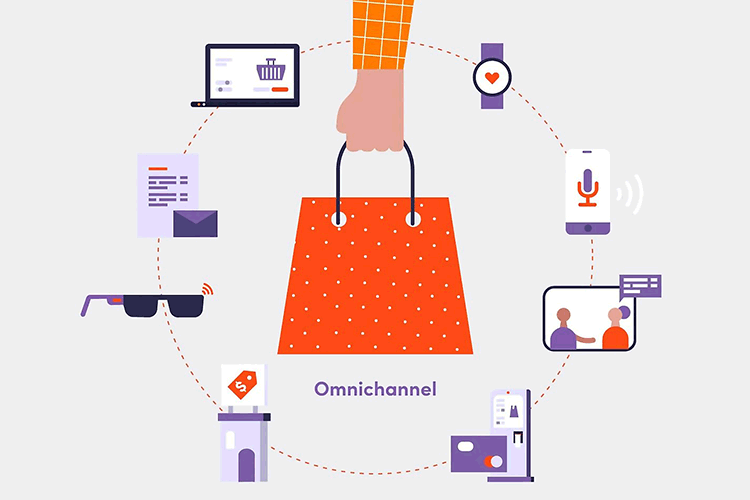Physical Retail in a Digital World

The dizzying speed at which commerce is evolving can make it hard to keep up. Knowing how to distinguish the technical fads from the must-haves is a challenge in and of itself, and the complex interplay between changing technology and customer expectations is presenting businesses with new, formidable challenges.
The pandemic has accelerated this evolution, advancing the adoption of digital shopping by approximately five years. While these advances have directly impacted digital retail, they’ve led to some positive and profound changes in the role and performance of physical stores.
Fulfillment processes are more efficient than ever before, and customer journeys are much richer and more relevant. Still, some traditional brick-and-mortar retailers aren’t able to hit those marks. It’s not for lack of trying, but rather by losing sight of what makes the in-store experience so special or by treating it as an island unto itself.
Make it Memorable
In a world of online marketplaces and big box stores, it can be hard for a retailer to remain competitive. Even in small and niche markets, where one retailer can own the territory for their community, competition from online retailers is still a serious consideration for them.
The role of the physical store in overcoming the challenges of this landscape rests in its ability to provide a customer experience that elevates the brand among its competitors. Whether customers want to touch and feel a product before purchase or gain product knowledge from an associate, their tactile experience with the brand has a significant impact on their perception of the brand.
In fact, according to the Journal of Marketing, customers who tangibly engage with products in store are able to learn more about the retailer, which “precipitates repatronage and generalizes to future online purchases in the same category and in adjacent categories…” In other words, in-store shopping tends to have a positive impact on customer loyalty and future purchases online. We can also see this dynamic at play when it comes to return policies; if consumers have the option to return an item in-store, they are 62% more likely to shop online.
A positive experience with a brand, in-person or otherwise, is a vote of confidence for that brand—and that vote of confidence often translates to bigger shopping carts or positive social media buzz. Win-win, right?
Even digital native brands are realizing the importance of in-person experiences and pushing for more brick-and-mortar storefronts. Kirsten Green, founder of venture capital firm Forerunner Ventures, speaks to the role of physical stores in helping a brand grow: “You can build a business of a certain size online, but the reality is, if you really have scale in mind, you are going to need to think about meeting the customer where the customer is. And they are in a lot of different places.” The challenge, however, is making yourself stand out.
The Omnichannel Experience
In the days of e-commerce past, physical stores and websites were treated as two separate silos. This was workable when brands only had two channels to worry about but look where we are now. With websites, in-store kiosks, mobile apps, voice-operated smart-home devices, VR/AR, the metaverse, and beyond, consumers have blown past the previous standard of two touchpoints
To that end, modern brands are tasked with the increasingly difficult job of providing their customers with a seamless journey across channels. But doing that requires a holistic view of customers that only an omnichannel experience can provide.
No more silos. Just one umbrella.
While some brands continue to treat their channels—including brick-and-mortar stores—as detached entities, a brand’s success in delivering a consistent customer journey means unifying those channels. Global consultant McKinsey & Co. highlight this imperative: “The most successful retailers will be those that connect with consumers in new ways by leaning in on their digital, omnichannel, and in-store technology ambitions.”
Even digital native brands are realizing the importance of capitalizing on both physical and digital channels. The sustainable shoe brand Allbirds, for example, reported that in the summer of 2020, consumers who visited both the website and a physical location spent 1.5 times more money than consumers who engaged on only one channel.
Think about your own shopping behavior over the course of the pandemic. Did you ever buy an item online and pick it up in the store? How often did you use an in-store kiosk to check if a product was available at another location? The proliferation of these options demonstrates that face-to-face experiences are still crucial, even in an increasingly digital world.
As Nandan Sheth, head of Carat and Digital Commerce at Fiserv, observes, “The pandemic has taught us that we are social creatures. The notion of 100% digital commerce in the future is folly. In reality, face-to-face experiences enhance the commerce journey for consumers.”
With the next wave of commerce, these omnichannel experiences will become even more important, and brands will have to find innovative ways to integrate or blend different touchpoints. But when done successfully, not only do brands enhance their value, they also empower their customers with the freedom to choose what to buy, when to buy, where to buy, and how.
Go Forth, Traveler
In the world of modern commerce, the more entry points and touchpoints you offer your customers, the greater your reach will be. That said, crafting a seamless customer journey is rarely done using a one-size-fits-all solution. The reality is that your business needs are unique and dependent on a variety of factors like market forces, consumer behavior, industry trends, and your own technical capacity.
Source: Myplanet